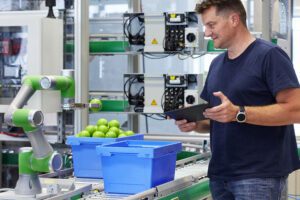Sustainability is imperative for economic development in tandem with social advancement. Environmental protection is widely accepted, but much debate remains about serious implications for the products, materials, and technologies in the future.
The challenge remains to demonstrate sustainability into a value-adding framework for innovation in processes, technologies, business models, and management systems.
If the goals of the 2015 Paris Agreement are to be met, the earth needs more wind, solar, zero tail emissions electric vehicles, stationary storage, and distribution and it is known that these technologies rely on various materials.
If we take the objectives of the Paris Agreement seriously, then we must think proactively about making substantial progress by 2030. At Schneider Electric, we believe that sustainability is a must for all living species, and a chance to create resilience and efficiency in the long run. The foundation for sustainability and green offers relies totally on green materials.
The simple definition of ‘green’ materials
‘Green’ materials are available in many forms. They are ranging from degradable circuit boards and organic electronics to metals that are infinitely recyclable and reusable. Organic and inorganic materials can both be considered green.
However, in Schneider, we use materials that are designated for industrial use like plastics and metals. So, let’s focus mainly on green plastic and green metals. These two commodities are baking into government policies of many countries and may soon become parts of strategy organizations involved in manufacturing.
Benefits of using green materials are:
- Product differentiation
- Agreement with government regulations and environmental standards
- Added values with a zero-emission approach
Schneider Electric is taking serious efforts and initiatives by signing of European Plastics Pact on its official launch in Brussels on March 6th, 2020; and it is committed to going further with new targets to market usage of green plastics. A few of them are as below.
- Moving far away from single-use plastics in employees’ day-to-day activities.
- Moving towards 100% sustainable packaging including primary (product) packaging with actions to maneuver to recycled/certified materials, remove single-use plastics, etc.
- Launching suitable pilot projects to check the technical feasibility
- Deploying a ‘Sustainable Packaging Guideline’ to implement Schneider’s sustainable packaging targets.
Let’s now focus on green metals. Currently, primary metals production is accountable for 7-8% of the entire global energy use and contributes to severe local environmental impacts.
It is important to implement the best available techniques for recycling metals, which not only requires significantly less energy per kilogram metal produced than primary production but also helps to decrease local impacts of mining.
Metals manufacturing giants started working towards a significant reduction in CO2 and maximum possibilities of recycling metals. However, the challenge seems big looking at the size of the industry and varieties of metals and alloys.
Some metals utilized in mobile phones and solar cells have a recycling rate, but it is significantly less about 1%. Whereas, for energy products and solutions which Schneider is offering to the customer, the recycling rate is way higher.
Five opportunities toward ‘green’ metal goals
Considering the challenges and opportunities for green metal, I believe that we’ve got five important opportunities toward green metal goals. Leading steel and mining companies are already pursuing a range of strategies over a variety of GHG reduction possibilities that include:
- Switching major fuel from coal to biomass.
- Improving blast furnace (BOF) efficiency to reduce energy consumption and production losses.
- Increasing scrap recycling using electrical arc furnaces, (EAF).
- Capturing carbon emissions for reuse in creating new products for the industries.
- Perfecting and commercializing transformational, low environmental impact technologies like Hydrogen Based Direct Reduction Iron (DRI) mainly for Steel.
Schneider is assessing the situation on various aspects and technologies on green metal, and as an organization, we are at an advanced stage on green plastics.
Long-term sustainability will be soon a reality in Schneider, but they raise complex topics of discussion like
a) stop water ingress and corrosion on products.
b) Convince metals companies to scale back carbon footprint on their manufacturing line so that both benefit from the sustainability journey.
In a nutshell, the role of green materials imposes lots of challenges, but Schneider Electric is extremely serious about achieving sustainability targets and provides a platform for customers and suppliers to connect seamlessly to become a part of the journey.




Conversation
Awsome Blog About Green Metal Producing in India.